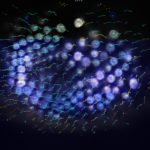Link to Pubmed [PMID] – 37408252
Link to DOI – 10.3390/cells12101418
Cells 2023 May; 12(10):
The Neurovascular Unit (NVU), composed of glia (astrocytes, oligodendrocytes, microglia), neurons, pericytes and endothelial cells, is a dynamic interface ensuring the physiological functioning of the central nervous system (CNS), which gets affected and contributes to the pathology of several neurodegenerative diseases. Neuroinflammation is a common feature of neurodegenerative diseases and is primarily related to the activation state of perivascular microglia and astrocytes, which constitute two of its major cellular components. Our studies focus on monitoring in real time the morphological changes of perivascular astrocytes and microglia, as well as their dynamic interactions with the brain vasculature, under physiological conditions and following systemic neuroinflammation triggering both microgliosis and astrogliosis. To this end, we performed 2-photon laser scanning microscopy (2P-LSM) for intravital imaging of the cortex of transgenic mice visualizing the dynamics of microglia and astroglia following neuroinflammation induced by systemic administration of the endotoxin lipopolysaccharide (LPS). Our results indicate that following neuroinflammation the endfeet of activated perivascular astrocytes lose their close proximity and physiological cross-talk with vasculature, an event that most possibly contributes to a loss of blood-brain barrier (BBB) integrity. At the same time, microglial cells become activated and exhibit a higher extent of physical contact with the blood vessels. These dynamic responses of perivascular astrocytes and microglia are peaking at 4 days following LPS administration; however, they still persist at a lower level at 8 days after LPS injection, revealing incomplete reversal of inflammation affecting the glial properties and interactions within the NVU.


